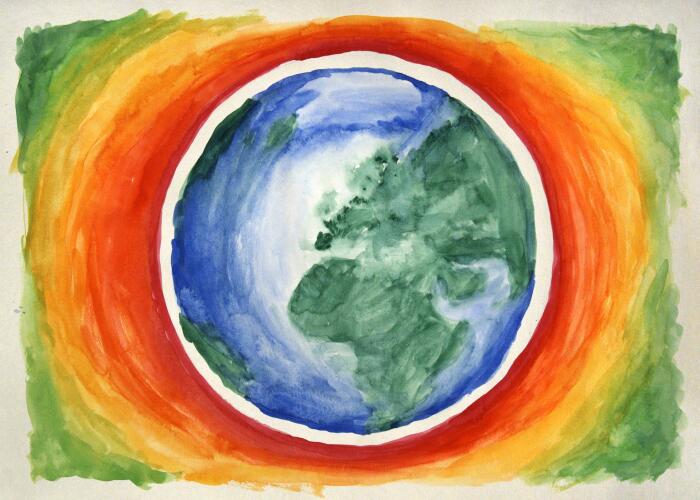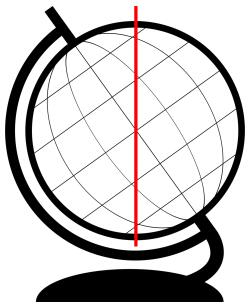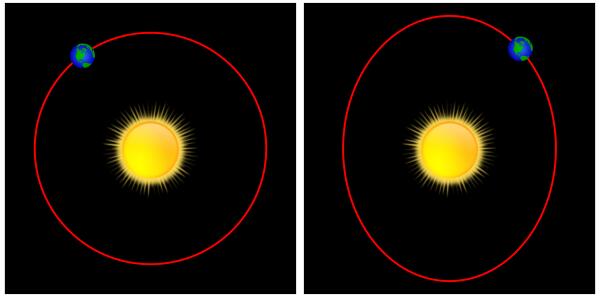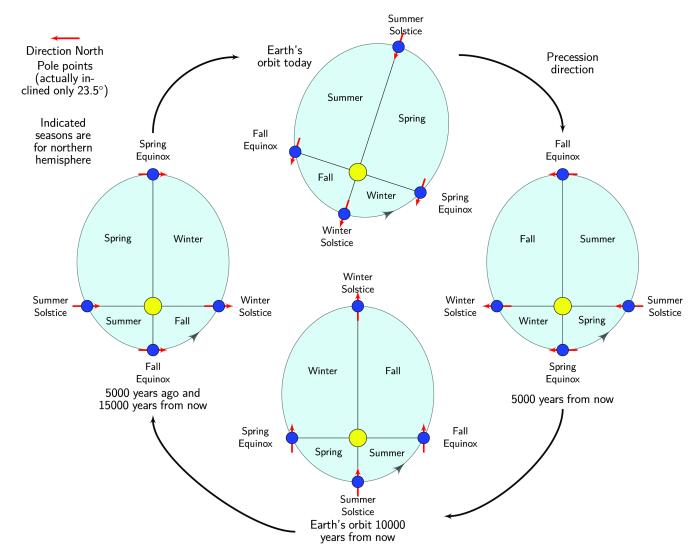The Earth's Spin on the Climate Situation

The Earth should be cooling down right now, based on natural orbital factors, but it is instead warming. It is, of course, alarming that human-caused global warming is strong enough to counteract the current natural cooling phase that we are in.
As we celebrate the summer solstice in the northern hemisphere—the day when the Earth's orientation to the sun in the north is most direct—we wanted to take a moment to reflect on a few of the details about our planet's travels and examine how exactly they affect the climate.
The Cycle of Changing Temperatures
The three orbital factors that affect the Earth's temperature are: tilt, orbital shape, and a subtle wobbling action called precession. These three factors were first identified as affecting the Earth's temperature by 19th century astronomer Milutin Milankovic, and together influence a pattern of cooling and warming called Milankovitch cycles.
Here's how it works.
Tilt (obliquity)
 As the Earth tilts toward the sun, the northern hemisphere receives the sun's rays more directly and therefore more heat. The northern hemisphere also has more land than the southern hemisphere and, because it takes more energy to heat water than land, overall the Earth experiences greater warming when the north receives more rays.
As the Earth tilts toward the sun, the northern hemisphere receives the sun's rays more directly and therefore more heat. The northern hemisphere also has more land than the southern hemisphere and, because it takes more energy to heat water than land, overall the Earth experiences greater warming when the north receives more rays.
The cycle of the Earth's tilt (called "obliquity") spans a 40,000-year period. Right now the Earth is in the middle of the cycle (it is nearly "upright"), which means that the rays are almost evenly distributed between the northern and southern hemispheres. But because there is more water than land on the Earth, the net effect is a cooling one.
Orbital Shape (eccentricity)
The second factor is the Earth's orbital path around the sun, which is elliptical in shape. This path causes the Earth to be closer to the sun during part of the year and further away during the rest. When the Earth is closer to the sun it receives more heat than when it is further from the sun.
But this orbital shape changes over time, affecting the Earth's overall climate situation. This variation is known as eccentricity and it changes over a period of about 100,000 years. Currently the Earth's orbit is as similar to a circle as it gets, which means the Earth should be having relatively cool and consistent temperatures.

Wobble (precession)
Essentially, the Earth wobbles side to side on its axis as it spins, causing parts of it to sometimes be closer to the sun than others at different times of year (the changes occur over a 25,000 year period approximately).
As with obliquity, the amount of land or ocean that is exposed to the sun also has an impact with regards to precession. If the part of the Earth with the most land has summer when the Earth wobbles toward the sun, it will raise the overall temperature of the Earth much more than during an ocean-heavy summer. Right now, the Earth's precession is such that the oceans are more exposed to the sun than land and the effect should be cooler temperatures.

No Spin on the Need for Climate Action
According to 95% of climate scientists, the Earth's temperature is rising because of the greenhouse gases generated by humans. We cannot "spin" these facts any other way: we have a serious climate problem and we need to take action now.
It is our duty to the planet we live on to help reduce the output of these greenhouse gases, so that the damage already caused can be mitigated and further damage can be prevented.
